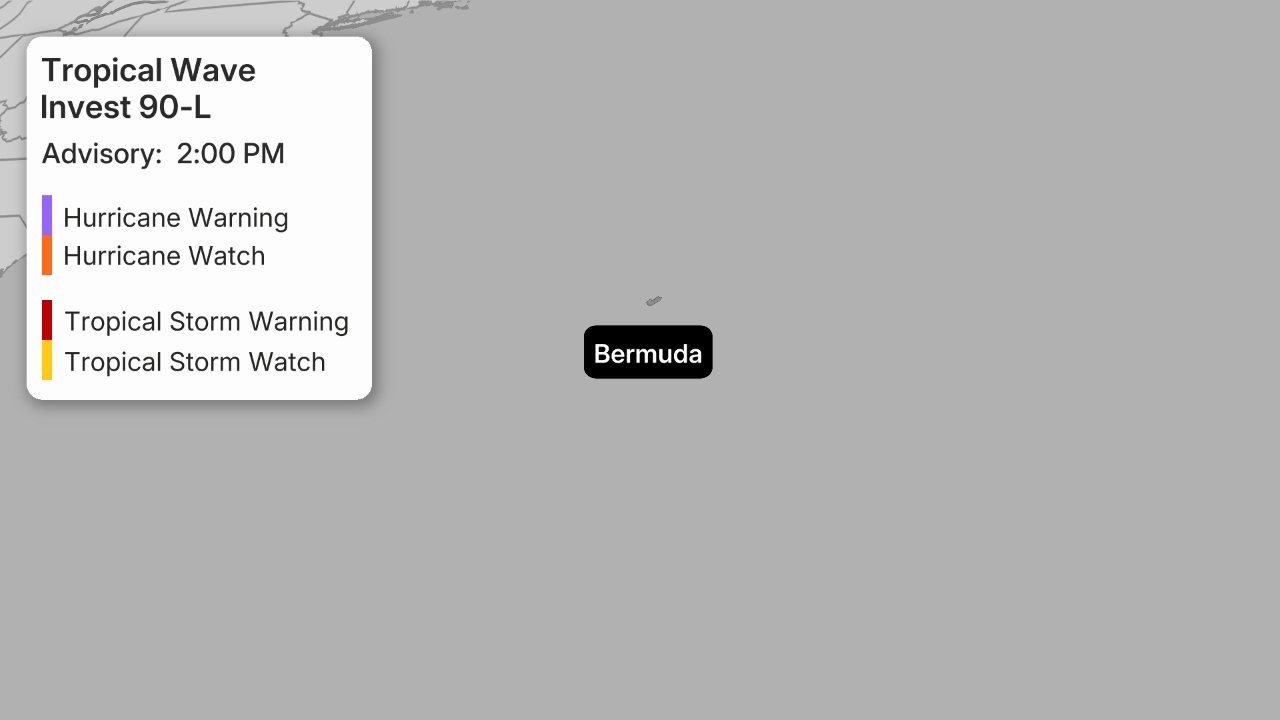

- Tropical Storm Francine has formed in the western Gulf of Mexico.
- The storm is expected to strengthen into a hurricane on Wednesday as it moves toward the northern coast of Texas and Louisiana.
- Floods, rainfall, storm surges, destructive winds and tornadoes all pose threats.
- Francine is the first Atlantic storm since Ernesto about three weeks ago.
Tropical Storm Francine has formed in the western Gulf of Mexico and is forecast to become a hurricane threat for the Louisiana and northern Texas coast by Wednesday.
The National Hurricane Center on Monday morning declared Tropical Storm Francine the sixth named storm of the 2024 Atlantic hurricane season and the first storm in nearly three weeks.
Here is the latest status of this system: The center of Francine is over 400 miles south of Cameron, Louisiana, and is slowly moving north-northwest.
Most of the rain from this system is currently offshore, but some rainbands have also reached parts of South Texas.
On Monday morning, tide gauges recorded some minor flooding along the Texas coast from Port O’Connor southward.
(MAP TRACKER: Spaghetti models and more)
Where watches and warnings are in effect: The map below shows where hurricane and tropical storm warnings and alerts are currently in effect.
A hurricane warning has been issued from Cameron to Grand Isle, Louisiana. This warning is usually issued 48 hours in advance of the time when conditions are expected to worsen and require hazardous preparations.
A storm surge warning has also been issued from High Island, Texas, east of Galveston Bay to the Mississippi-Alabama border, including Vermilion Bay, Lake Pontchartrain, and Lake Maurepas. This means that life-threatening storm surge is possible in these areas within 48 hours.
Tropical storm warnings are in effect from northeastern Mexico to Port Mansfield, Texas, and also from east of Galveston Bay to Cameron, Louisiana, and from near Grand Isle, Louisiana, to the Louisiana-Mississippi border, including Lake Pontchartrain. This means tropical storm force winds are possible.


Expected trajectory and intensity: Francine is expected to strengthen into a hurricane before making landfall somewhere along the Louisiana or Texas coast later Wednesday. It is expected to move over a pool of very warm Gulf water, which could further increase its intensity. But it could also face increasing wind shear and possibly drier air near the Gulf Coast, which could limit its intensity near landfall.
However, Francine’s impacts will spread northward along the Texas and Louisiana coasts well before landfall. After landfall, the system will spread rainfall through parts of the South as far north as the middle Mississippi and Ohio valleys later this week.


Possible effects
Flood Rain
Rainfall totals from Francine could reach 4 to 8 inches, locally up to 12 inches, from the coast of extreme northeastern Mexico to the coast of extreme southern Texas and parts of southern Louisiana and southern Mississippi by Thursday morning.
The rain will fall on ground saturated by recent heavy rainfall across the region and flash flooding may occur.
Heavy rainfall from this system will spread across other parts of the South and into the northern middle Mississippi and Ohio valleys late this week. At least localized flooding is possible in these areas.
However, there could be a large variation in precipitation amounts west and northwest of Francine’s path as drier air may move in. Areas not too far inland from the Texas coast can expect little to no precipitation.
(Improve your forecast with our detailed hourly breakdown for the next 8 days – only available on our Premium Pro experience.)


Storm surge
Starting Tuesday night, a life-threatening storm surge will form and inundate low-lying areas along the upper coast of Texas and Louisiana.
According to the National Hurricane Center, flooding in parts of southern Louisiana, including Vermilion Bay, could reach heights of 5 to 10 feet (1.5 to 3 meters) if the storm surge arrives at the same time as the high tide.
If you are asked to evacuate, follow the instructions of local authorities.


Harmful winds
Hurricane warning areas in southern Louisiana could experience hurricane strength by Wednesday afternoon. Complete all preparations in these areas by Wednesday morning, when tropical storm force winds could develop.
These winds can knock down trees and knock out power in southern Louisiana. Prepare now for power outages that could last several days after the storm passes through this area.
Tropical storm force winds are possible near the South Texas coast and in other parts of southeast Louisiana and the Upper Texas coast. Isolated power outages and tree damage are also possible.


Possible tornadoes
Tropical cyclones making landfall often produce a few tornadoes near the coast and inland. An isolated tornado threat from this system could develop in southern Louisiana, southern Mississippi, southern Alabama, and the western Florida Panhandle by Wednesday or Wednesday night.
The tornado threat could continue along the northern Gulf Coast on Thursday and spread to the Tennessee Valley in the north by Friday.
For the first time in a while
Francine was the first Atlantic storm since Ernesto moved into the North Atlantic on August 20.
According to WPLG-TV hurricane expert Michael Lowry, it has been 30 years since the Atlantic basin last experienced the first full week of September without active tropical cyclones.
And tropical scientist Phil Klotzbach of Colorado State University noted that the last time there were no storms in the Atlantic basin from August 13 to September 8 was 1968.

